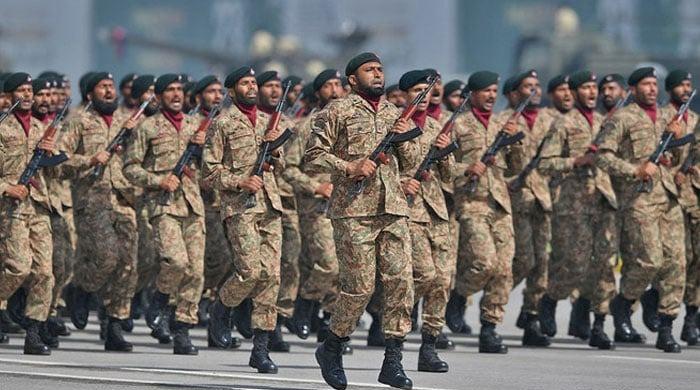Pakistan spends $ 11,590 per soldier in active service per year – a derivative figure by dividing the country’s total defense budget by the size of its active military staff.
In comparison, Iran spends $ 16,885 per soldier, India $ 50,858, Saudi Arabia $ 301,392 and US $ 667,169. These levels of expenses specific to soldiers – from Sipri, Iiss military balance and official national defense budgets – offer an overview of maintaining the war of each nation, including training, equipment, modernization of forces and logistical support by combatant.
What do these striking disparities reflect in soldier expenses? Three key ideas: one, despite the functioning with a significantly lower soldier’s expenditure, the armed forces of Pakistan constantly reach a high degree of effectiveness of combat, operational preparation and force multiplication.
Second, this “cost-capability” ratio underlines the capacity of Pakistan to generate a maximum deterrent value per dollar spent. Third, he reflects a posture of lean but deadly force – a posture which prioritizes agility and the force centered on the mission on pure financial expenditure.
At $ 50,858 per soldier, India spends 450% more than Pakistan’s $ 11,590 per soldier, but Pakistan managed to achieve the decisive results of the battlefield – an exceptional testimony of the Cost -Capability Report of Pakistan ”.
Consider this: Pakistan allocates approximately $ 1.7 billion per year for new weapons acquisitions, while India spends more than $ 22 billion a year for similar markets.
Since 2012, India has spent around $ 748 billion in defense, reflecting an overwhelming quantitative advantage. However, Pakistan systematically maintained qualitative parity thanks to targeted investments, a strategic doctrine and the effective structuring of the forces.
Red alert: To maintain and put such operational success in terms of the evolution of regional threats and the rapid modernization of adversaries, an increase measured in the defense allowance is imperative to preserve three critical capacities: the upgrade of combat, the modernization of force and long -term credibility.
The armed forces of Pakistan must continue to preserve tax efficiency at all costs. To improve war -fighting capacities, the short and medium -term objective of Pakistan should increase spending by soldier to around $ 15,000, aligning more closely with the $ 16,885.
Red alert: $ 11,590 of Pakistan per soldier risk the preparation gaps. $ 11,590 per soldier from Pakistan also risk obsolescence of equipment. Heavy investments in conventional platforms may not align with the rapid evolution of modern war. The frigates and naval submarines are very expensive and the naval war is evolving towards unmanned underwater vehicles (UUV), autonomous surface vessels and hypersonic anti-shipping missiles.
The main battle tanks (MBTS) require substantial funding for maintenance, upgrades and ammunition just when modern warfare moves to unmanned systems, anti-work guided missiles (ATGMS) and blur ammunition (drones like the Bayraktar TB2 or Switchblade).
The Pakistani fleet of 4th generation jets causes significant maintenance and upgrade costs. The emergence of unmanned air combat vehicles (UCAV) and drones of swarms led on AI transforms air combat, offering profitable and scalable alternatives.
We must also consider the following international precedents: German states (Länder) finance military infrastructure ($ 2.2 billion per year); US states finance the National Guard units ($ 12 billion); The Chinese provinces finance militia logistics ($ 5 billion); The Canadian provinces maintain CAF bases ($ 1.3 billion); Brazilian states finance the military police ($ 5 billion); The South African provinces finance training facilities ($ 550 million) and Mexican states finance Guardia Nacional and military infrastructure ($ 4 billion).
With budgetary surpluses of several billion rupees, the provinces of Pakistan can imitate the world’s previous ones, ensuring sustained effectiveness of combat and a credibility of deterrence.
The writer is a columnist based in Islamabad. He tweets / publishes @Saleemfarrukh and can be reached: [email protected]
Warning: The points of view expressed in this play are the own writers and do not necessarily reflect the editorial policy of PK Press Club.TV.
Originally published in the news




